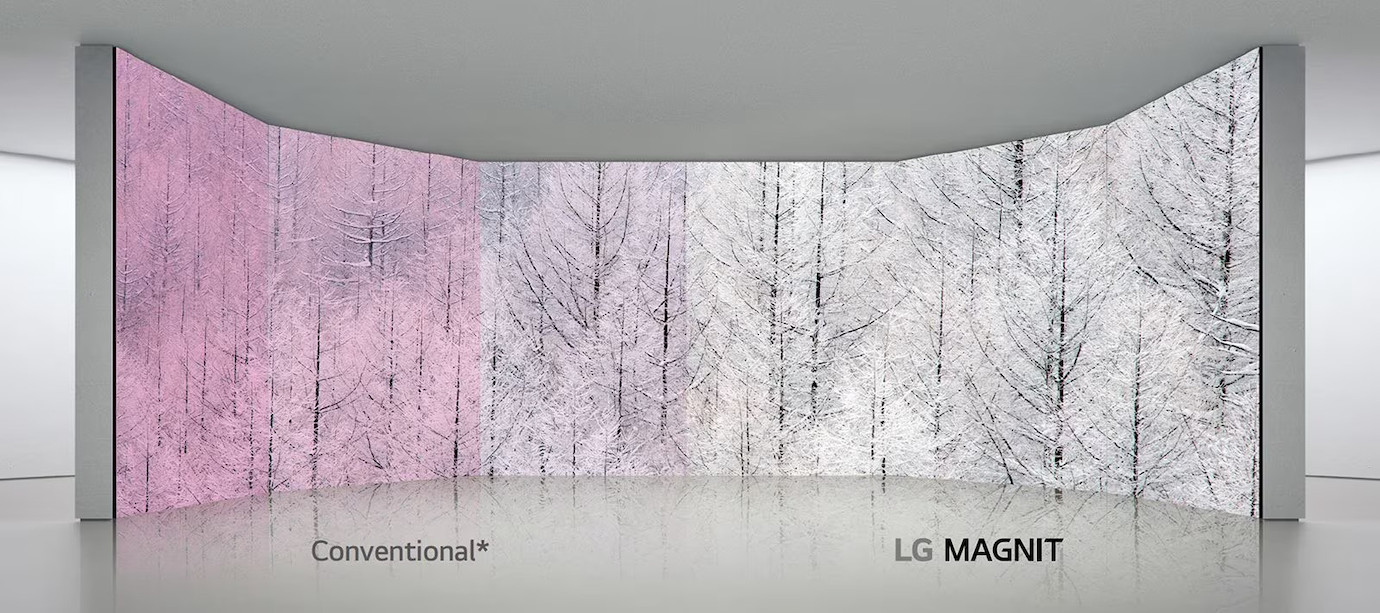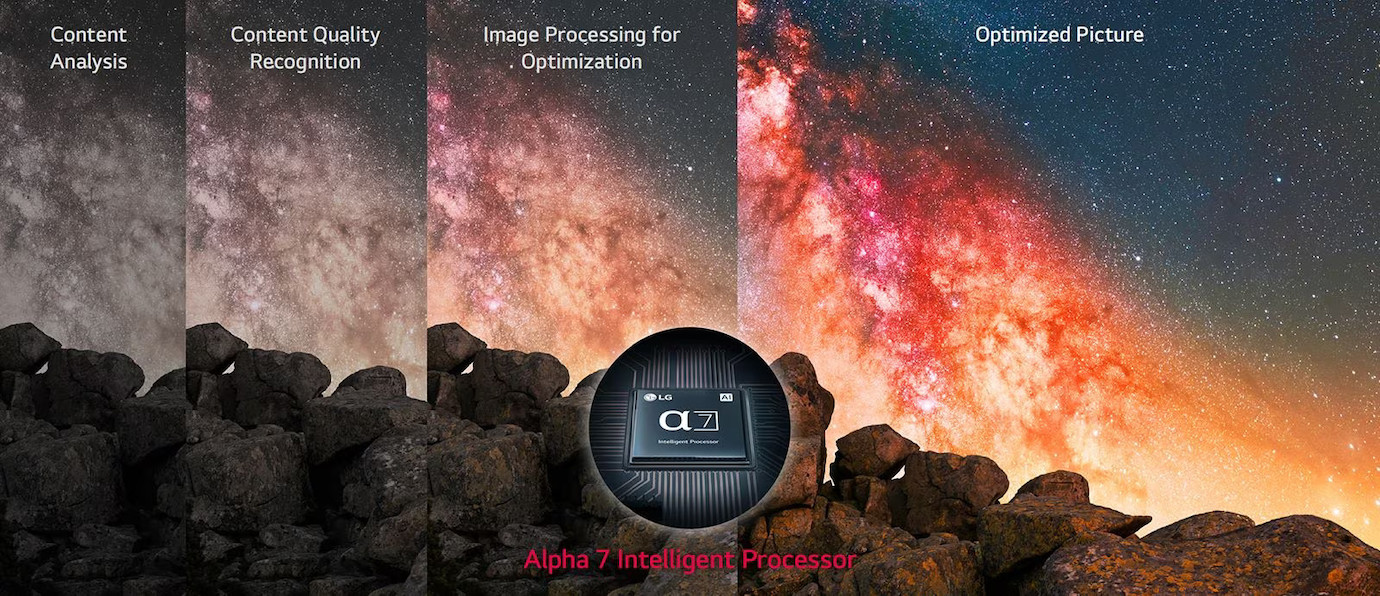















































£102,000.00*
- Resolution 1920 x 1080 Full HD
- pixel pitch 1.56 mm
- Max. Brightness 1,000 cd/m²
- Aspect Ratio 16:9


Product information
Enhanced visual precision with Micro Pixel Technology
GLG MAGNIT's Micro Pixel Pitch Technology offers remarkable visual precision. Our advanced LED chips provide impressive detail and precise light control, delivering crystal clear images on the display. Thanks to precise colour rendering, every hue is reproduced with stunning clarity and depth for a lifelike viewing experience. Enjoy the subtleties of display technology with LG MAGNIT.
Enhanced uniformity with LST (LG Surface Treatment) technology
LG MAGNIT's innovative chip transfer and surface treatment technology improves white colour uniformity and reduces colour distortion over a wide viewing angle, resulting in a true and accurate viewing experience. This technology ensures remarkable colour uniformity for outstanding picture quality.

Deep black with black coating technology
LG MAGNIT's advanced and precise method for direct bonding of micro-sized chips to PCBs, combined with black coating technology and the smaller gap between the chips and the PCB, creates a stunning black expression that stands out significantly compared to SMD LED displays. This makes them the ideal choice for displaying content that requires deep black colours and ensures that every image is rich, vivid and lifelike.
AI-powered viewing experience with Alpha 7 processor
LG MAGNIT is equipped with the advanced, AI-powered Alpha 7 Intelligent Processor, which ensures clarity and sharpness for an immersive viewing experience. Its advanced AI technology enables the processor to recognise and analyse content and adjust the display settings for each individual scene to create a highly realistic and vivid image.

All-in-one LED screen with built-in speaker
The LAAA series is a 136-inch large screen that comes as an all-in-one package with an integrated controller and built-in speaker. It dispels the preconception that LED screens are difficult and complex to install as it requires no controller connections or module configuration. After a simple installation, all you need to do is switch on the screen with a remote control, just like a TV at home.
High performance with webOS
The built-in quad-core SoC (System on Chip) can perform multiple tasks simultaneously to ensure smooth content playback. In addition, the LG webOS Smart Platform enhances the user experience with an intuitive user interface and provides SI or/and developers with simple app development tools such as SDK (Software Development Kit), SCAP, sample applications.
Easy installation process
Create a full screen of LG MAGNIT AIO with 5 units of assembled LDM (LED Display Module). A unit consisting of 30 modules is pre-configured with reduced gaps thanks to LG MAGNIT's professional module alignment process. Hold the screen in place with its refined bezels and back cover and connect a single power cable. Then it allows a clean installation without the complicated power connection.

Office meeting mode
The office meeting mode allows you to easily configure meeting room details such as the room number and the current time. It also includes practical functions such as automatic input switching, a presentation timer and customisable settings such as automatic brightness and picture mode.
Compatible with AV control systems
The LAAA series supports Crestron Connected® for high compatibility with professional AV control systems to achieve seamless integration and automated control to increase business management efficiency.
Technical data
| Name | LG LAAA015-G2 136'' All-in-One Micro LED Display |
|---|---|
| Article number | 1000032607 |
| GTIN/EAN | 8806084784452 |
| Manufacturer SKU | LAAA015-G2 |
| Model name | LAAA0015-G2 |
| Brand | LG |
| Product Type | LED Wall |
| Resolution | 1920 x 1080 Full HD |
| Diagonal | 136" |
| Aspect Ratio | 16:9 |
| Viewing angle - Horizontal | 160° |
| Viewing angle - Vertical | 160° |
| Max. Brightness | 1,000 cd/m² |
| Diode type | Micro LED/COB |
| pixel pitch | 1.56 mm |
| Pixel configuration | 1x red, 1x green, 1x blue |
| Pixel density | 409.6 m² |
| Inputs | 1x Displayport , 1x Ethernet , 1x RS232 , 1x USB-A , 3x HDMI |
| Outputs | 1x RS232 , 1x optical coaxial |
| Product width | 300.5 cm |
| Product height | 174.2 cm |
| Product depth | 5.49 cm |
| Weight | 190 kg |
| Colour | Black |
| Delivery contents | Power cable |
| Condition | New |
| Warranty | 36 Month |
| Warranty type | Onsite Repair Service and support information |
Product safety
| Person responsible for the EU |
|---|
| LG Electronics Deutschland GmbH |
| Alfred-Herrhausen-Allee 3-5 |
| 65760 Eschborn |
| Germany |
| info@lge.de |



